It’s the time of the year when we celebrate amazing — and tiny!– sights in science.
Each year, researchers working with the very smallest bits of science get a chance to showcase their field of work in the Nikon Small World photography contest. It is “open to anyone with an interest in microscopy and photography,” the competition’s website explains, and is currently in its 48th year of highlighting “stunning imagery from scientists, artists, and photomicrographers of all experiences and backgrounds from across the globe”
Each year, the submissions are breathtaking. Today we get to celebrate and enjoy the newest set of images that impressed the judges — 20 finalists and a few honorable mentions. So, in the order of awards, we have:
1st — Embryonic hand of a Madagascar giant day gecko (Phelsuma grandis)
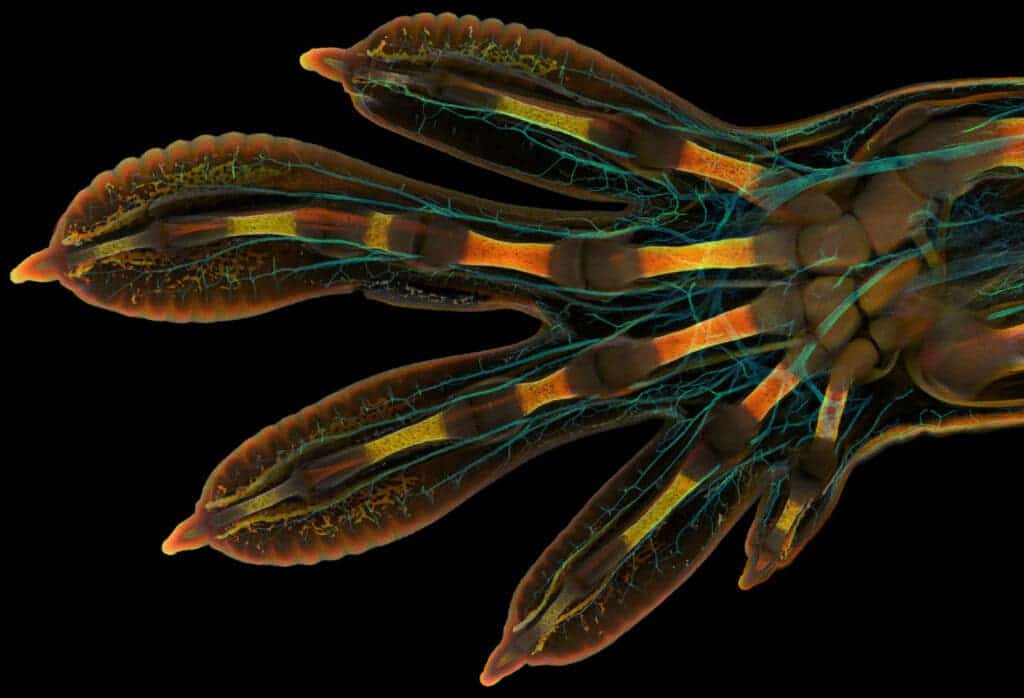
Submitted by Grigorii Timin, a graduate student at the University of Geneva Department of Genetics and Evolution and his advisor, Dr. Michel Milinkovitch from. It showcases the adhesive pads that the Madagascar giant day gecko is famous for.
These geckos make for popular exotic pets and are able to cling even to smooth vertical surfaces using their padded hands and feet.
The image was created by using whole-mount fluorescent staining of the gecko’s embryonic hand. Since the limb was huge by microscopy standards (about 3 mm or 0.12 inches long), Timkin shot and then merged 300 image tiles, each containing some 250 optical sections, to create the final result. Cyan-colored areas are nerves, with bones, tendons, ligaments, skin, and blood cells each represented in their own colors.
2nd — Breast tissue showing contractile myoepithelial cells wrapped around milk-producing alveoli
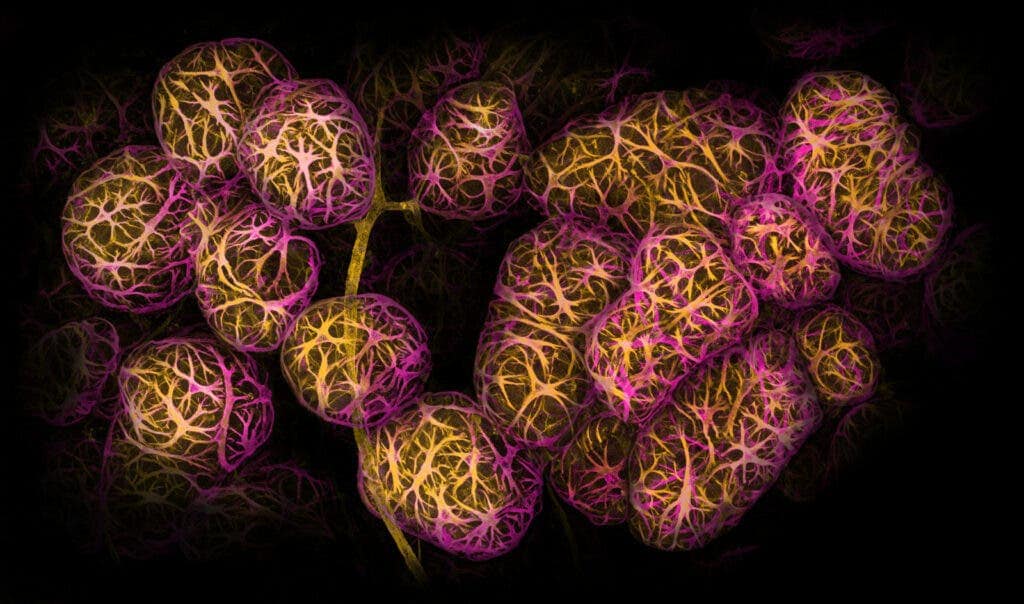
Submitted by Caleb Dawson from The Walter and Eliza Hall Institute of Medical Research’s Department of Immunology, the runner-up shot was taken using confocal imaging. This involves the scanning of a specimen using visible light to create computer-generated optical sections. Each section is around 250 nm thick, and the final 3D reconstruction is produced by stacking these sections together.
3rd — Blood vessel networks in the intestine of an adult mouse

Submitted by Satu Paavonsalo and Dr. Sinem Karaman at the University of Helsinki’s Faculty of Medicine in Finland.
This image was produced using the same confocal technique as the previous submission, but at a magnification of only 10x instead of the previous 40x.
4th — Long-bodied cellar/daddy long-legs spider (Pholcus phalangioides)
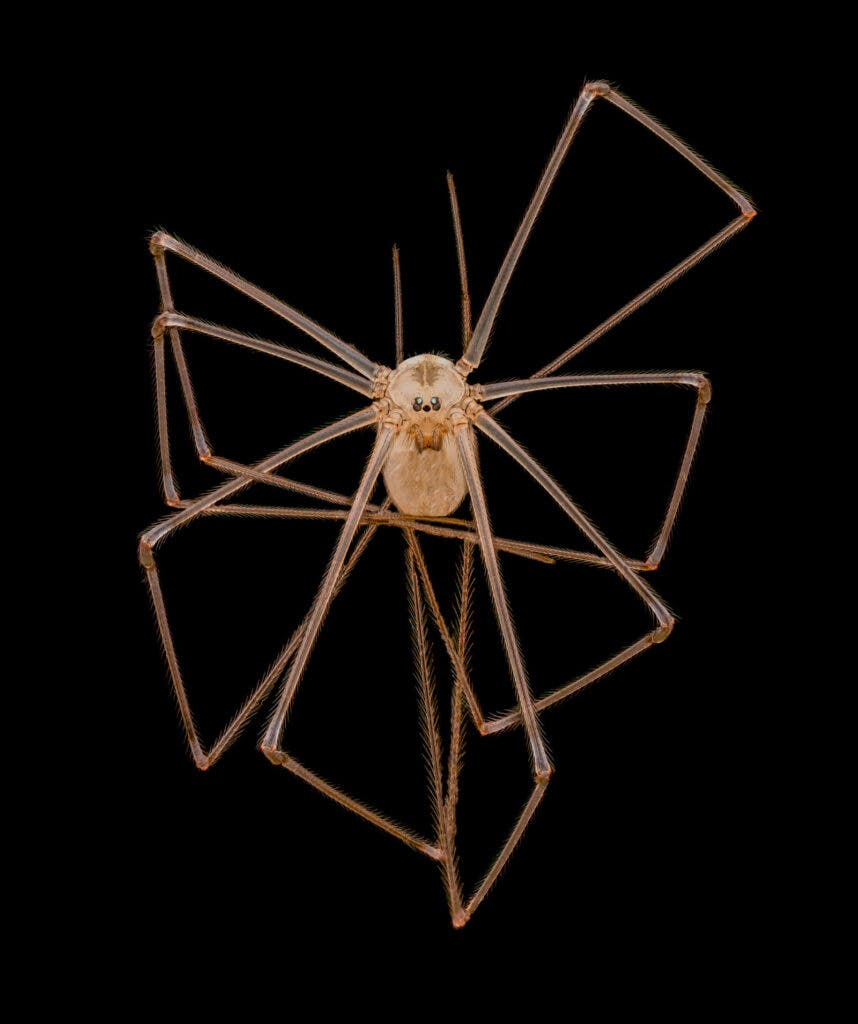
Submitted by Dr. Andrew Posselt from the University of California, San Francisco (UCSF) Department of Surgery.
All of us have at one point or another seen a daddy longlegs — but never quite like this. This image was produced using image stacking, a technique in which the subject is photographed at various focal distances. These are then stacked using a computer program to produce a single image with great depth of field.
5th — Slime mold (Lamproderma)

Submitted by Alison Pollack from San Anselmo, California.
Lamproderma is a larger genus of slime molds, best known for appearing on rotting wood, mosses, or liverworts. They first appear as slimy off-white masses, which grow into sphere-capped stalks over time.
6th — Unburned particles of carbon released when the hydrocarbon chain of candle wax breaks down
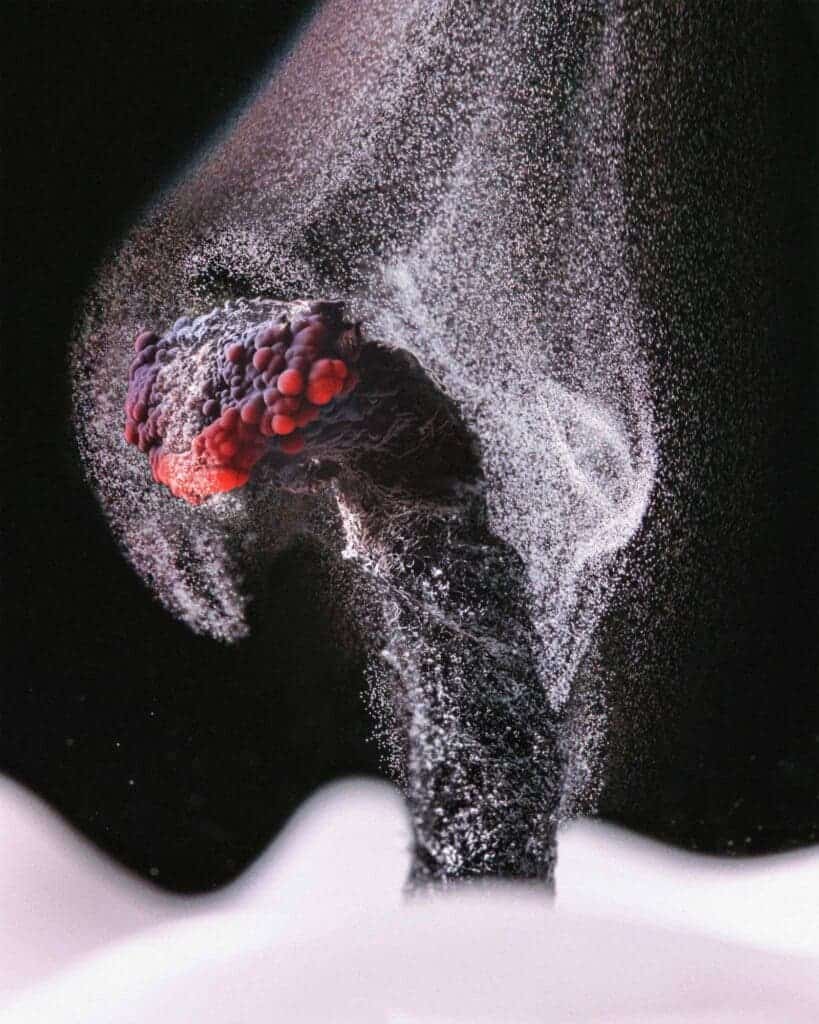
Submitted by Ole Bielfeldt, the 21 year-old German photographers behind Macrofying, known for his unique style of capturing everyday items. That personal style definitely shines through in this photograph and, I have to admit, this is my favorite shot of this year’s competition.
7th — Human neurons derived from neural stem cells (NSCs)
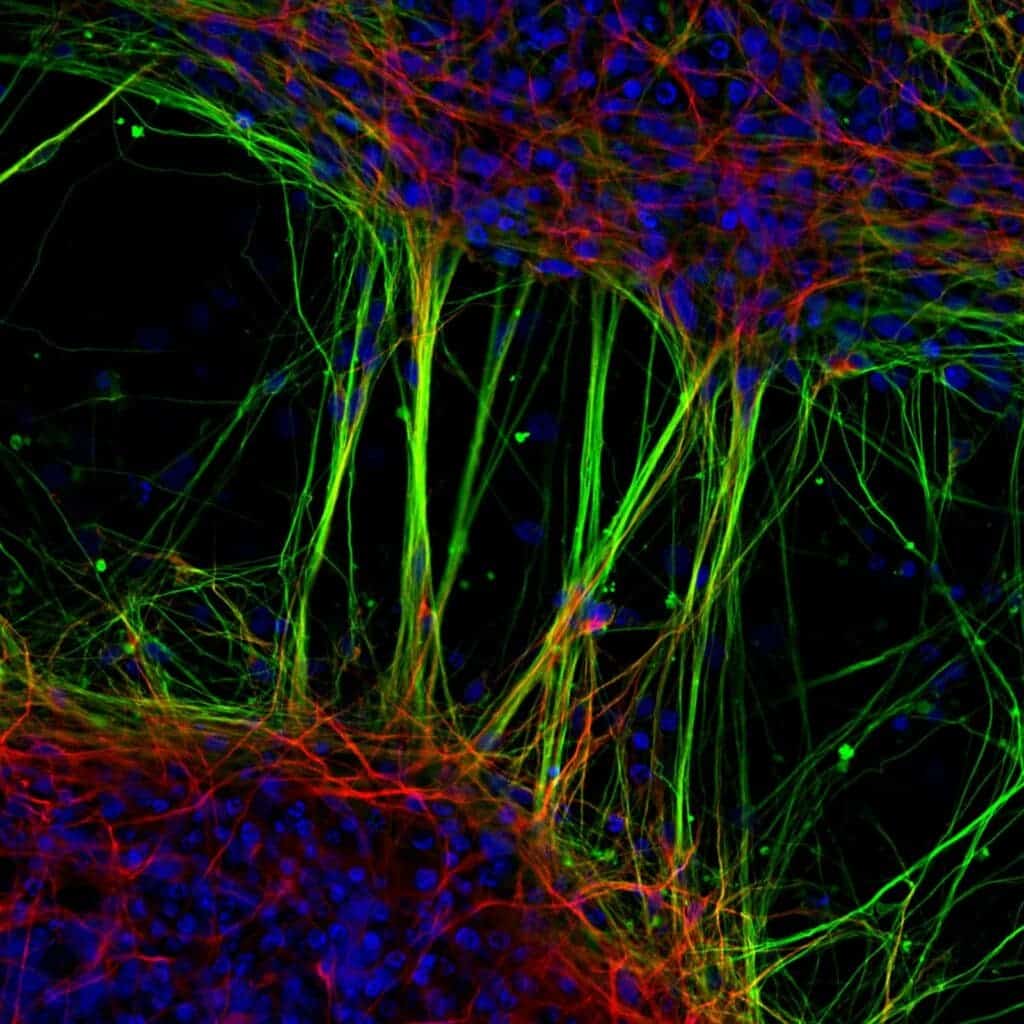
Submitted by Dr. Jianqun Gao and Prof. Glenda Halliday from the University of Sydney’s Central Clinical School.
NSCs are multipotent cells, cells in an undifferentiated state which can multiply without limit and later differentiate (transform) into neurons or their associated cell types, astrocytes and oligodendrocytes.
8th — Growing tip of a red algae
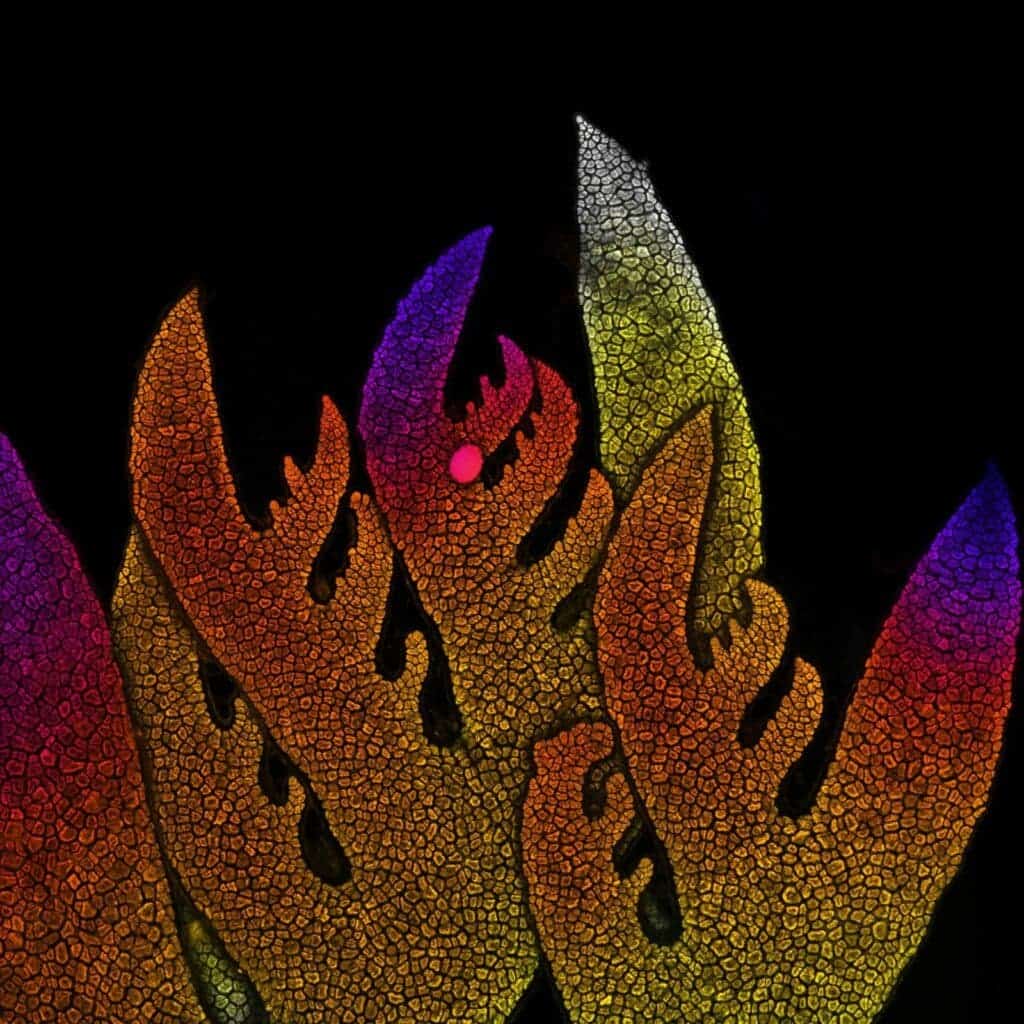
Submitted by Dr. Nathanaël Prunet from the University of North Carolina at Chapel Hill Department of Biology.
Red algae — Rhodophyta — are one of the oldest groups of organisms on Earth. Comprising more than 7,000 species, most of the organisms in this group are multicellular marine algae, including many common species of seaweed.
Growing tips are quite aptly named. They represent areas on the tips of stalks, stems, or branches where cells divide at a very high rate. It is here that the largest part of new tissue development takes place for the plant in question, which is sometimes supplemented by growth in bulk in other areas (for example, in the trunk of trees).
9th — Liquid crystal mixture (smectic Felix 015)
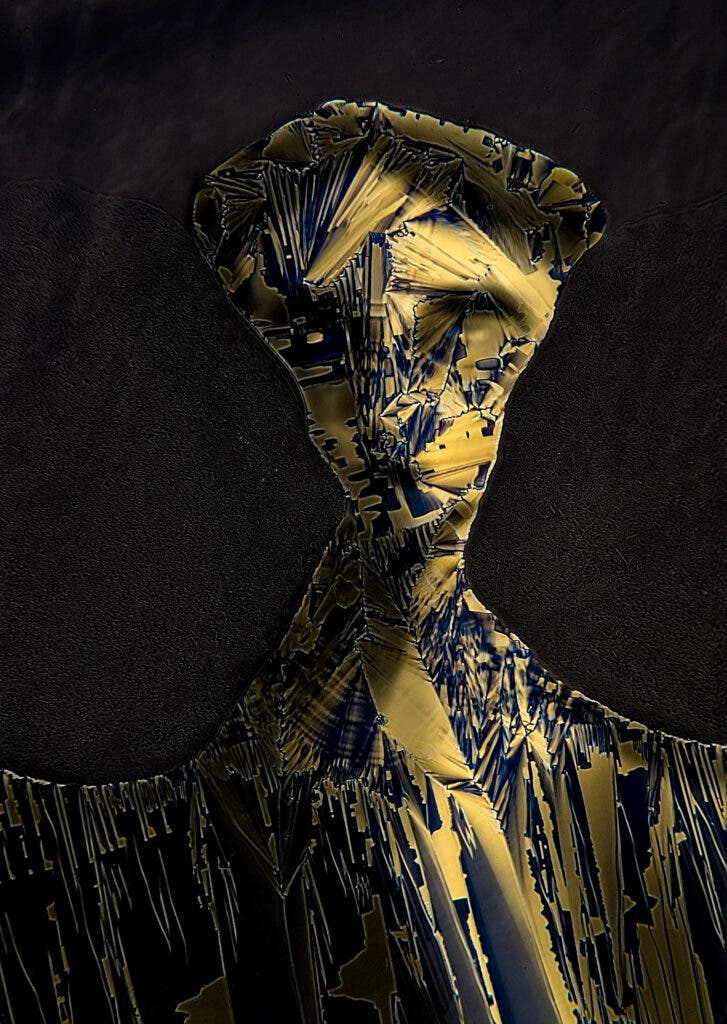
Submitted by Dr. Marek Sutkowski of the Warsaw University of Technology Institute of Microelectronics and Optoelectronics.
Liquid crystal (LC) is a state of matter that shares properties of both conventional liquids and solid crystals. A ‘smectic’ is a liquid crystal in which the molecules are parallel to one another and arranged in well-defined planes.
10th — A fly under the chin of a tiger beetle
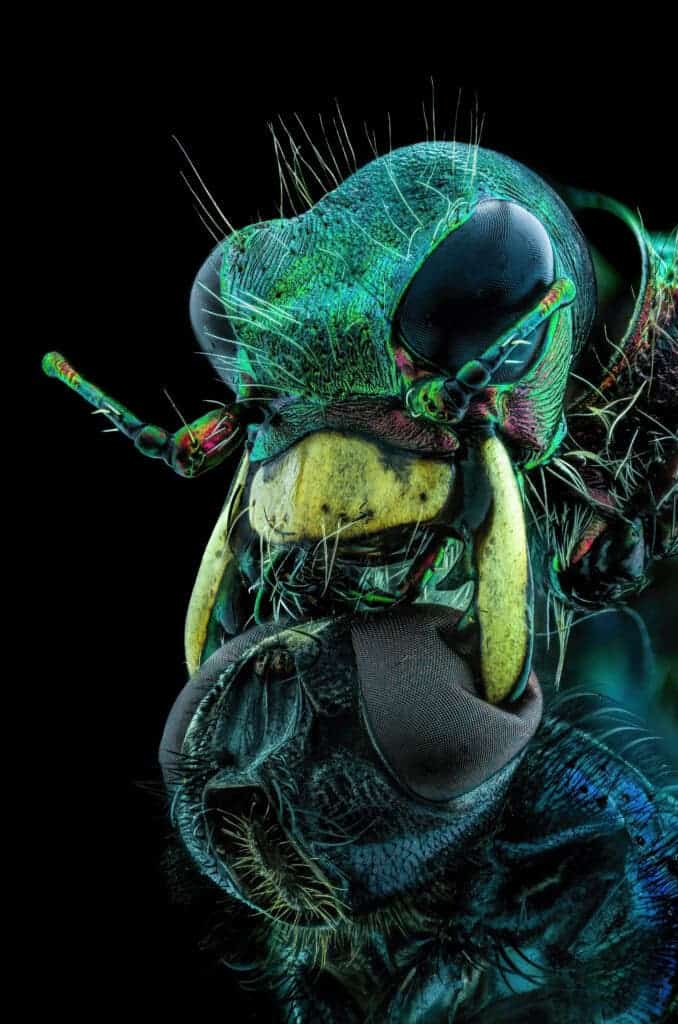
Submitted by Murat Öztürk, a photographer from Turkey (who has an amazing Flickr account).
Honorable mentions
It has been an amazing year for the contest, and no fewer than 82 pictures have made it to the honorable mentions category. We won’t be going through all of them here, but I will be leaving you with some of the highlights of the gallery, starting with this completely adorable stack of:
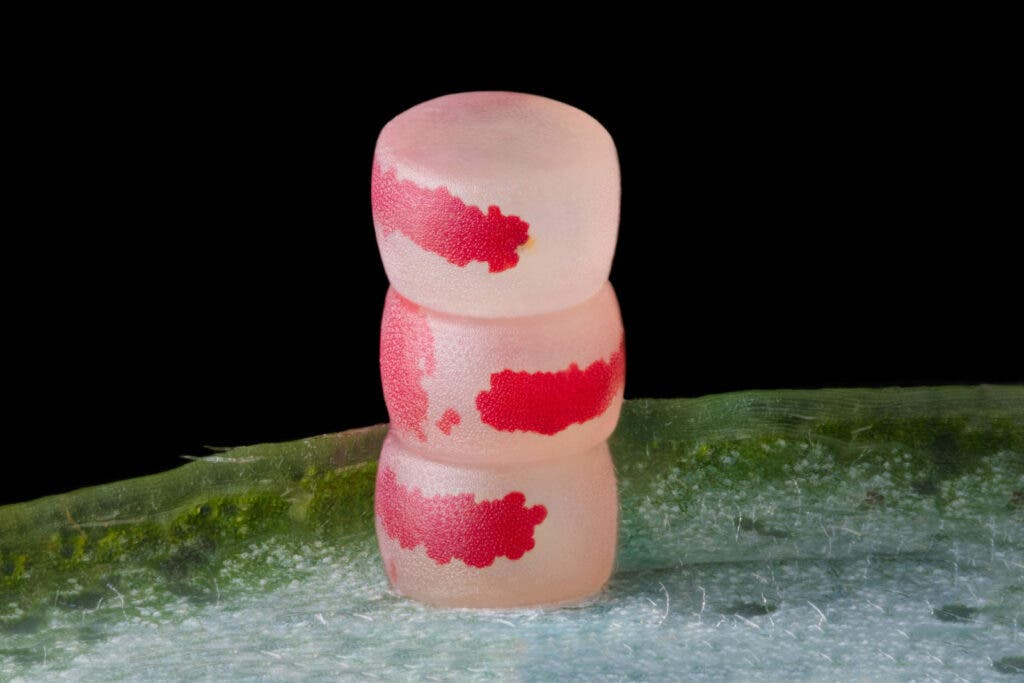

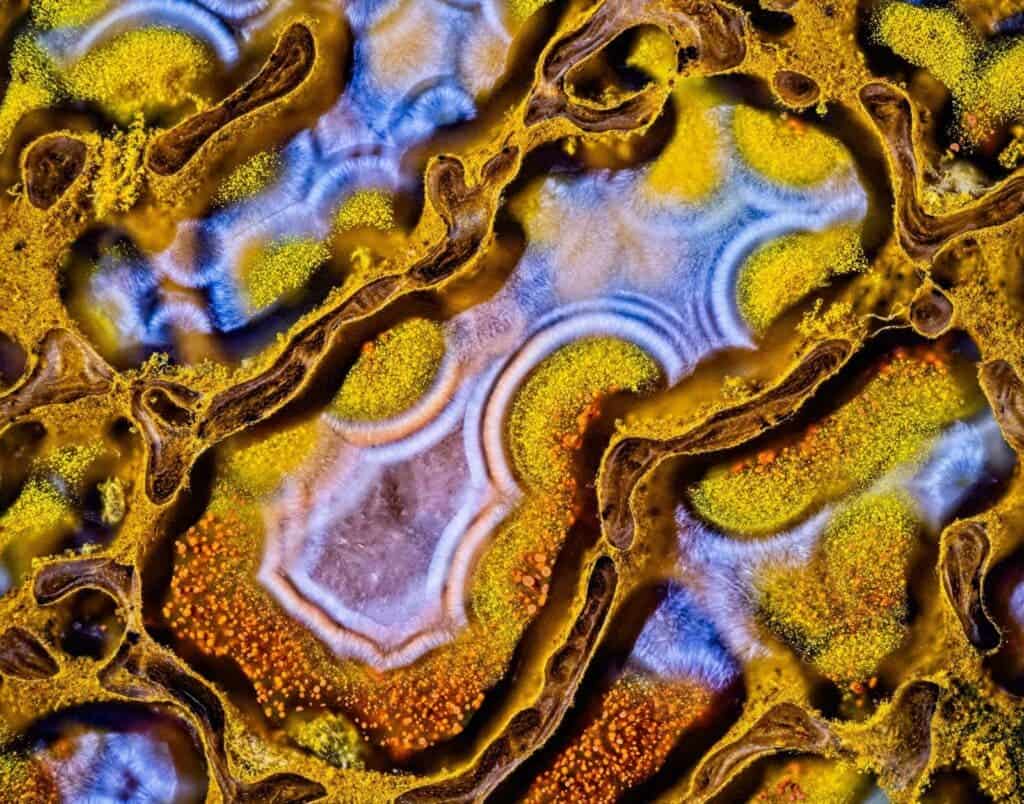
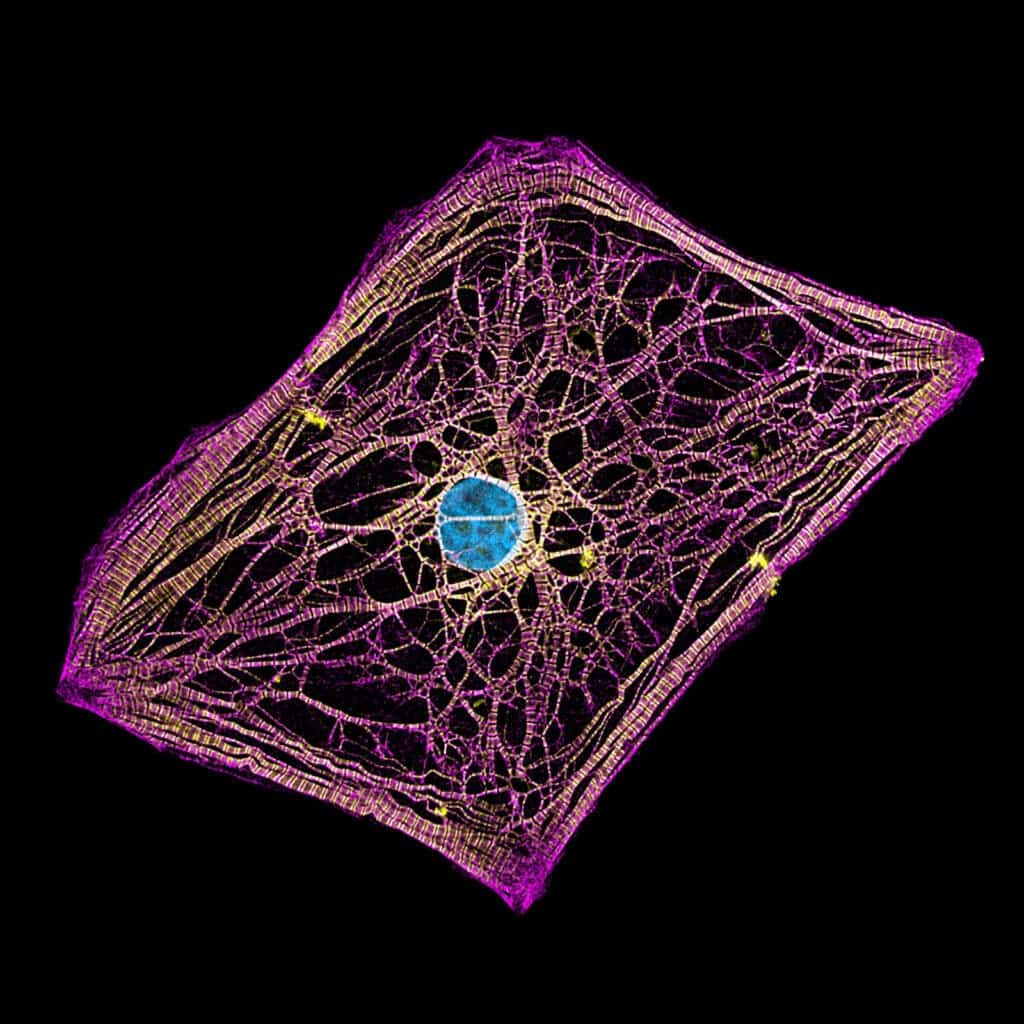
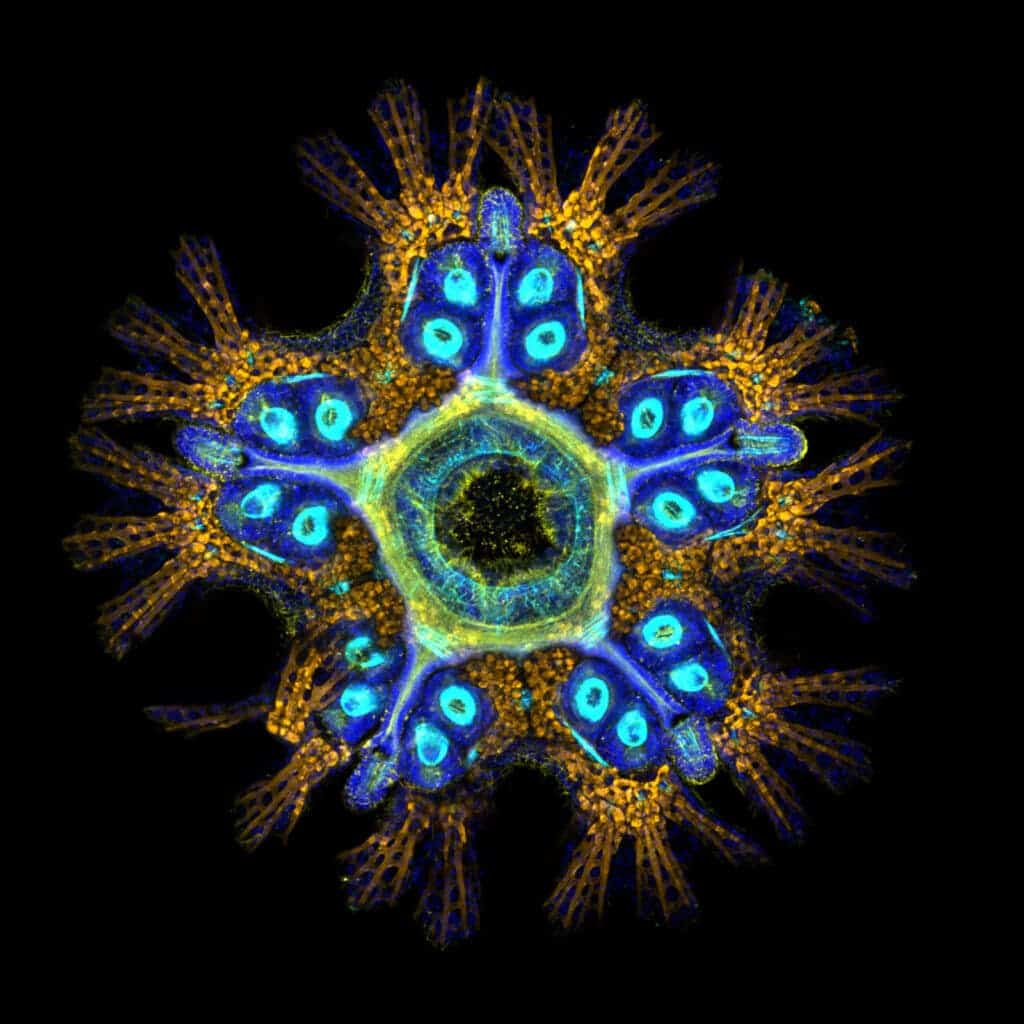
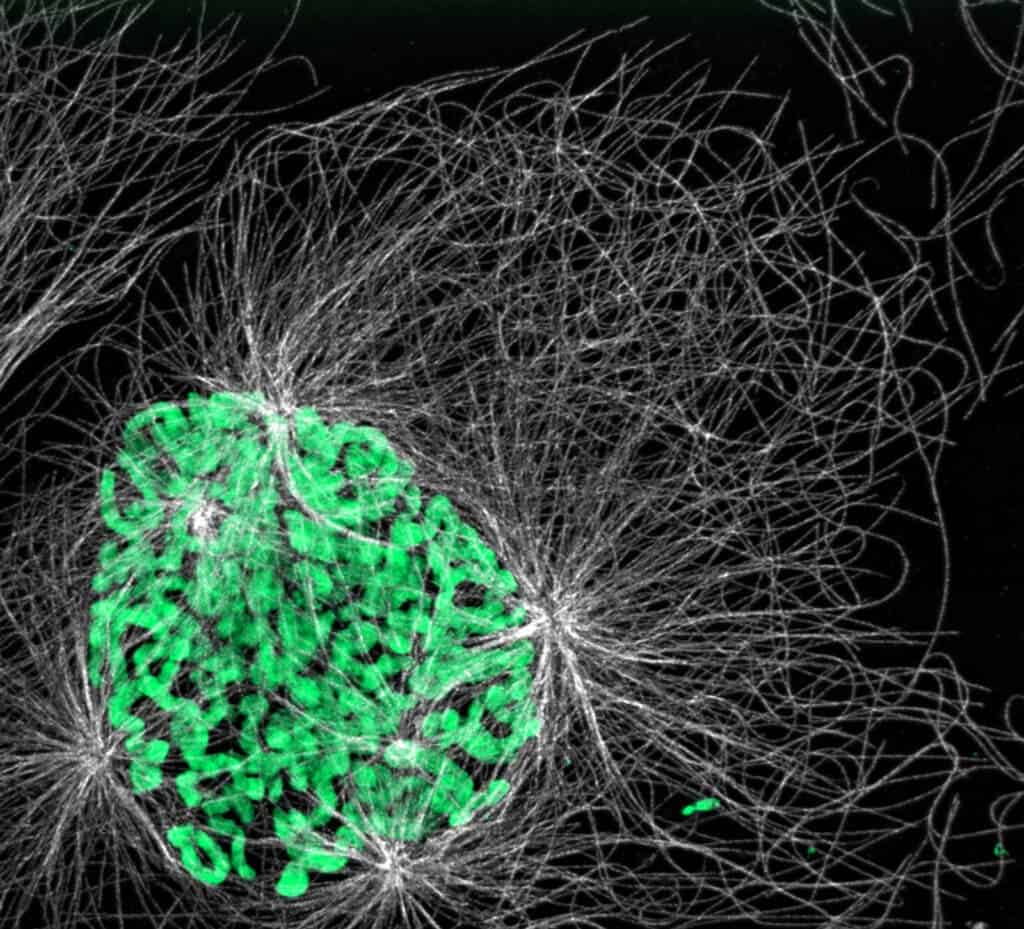
However, make sure to take a look for yourself. This year’s gallery of images is nothing short of amazing, and it will be quite worth your time and attention — I’ve already found a few that are going to become my new screensavers and phone backgrounds.
If you’ve missed previous editions of the contest, you’re in for a treat (here); the Nikon Small World has accumulated a treasure trove of fascinating and quite pretty images for you to gawk at.
[no_toc]









